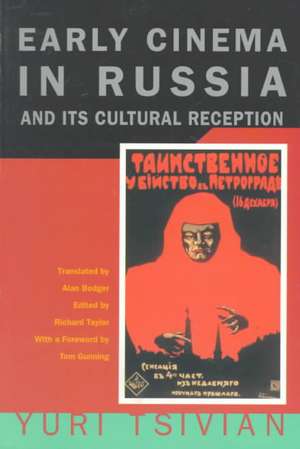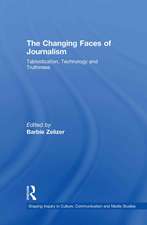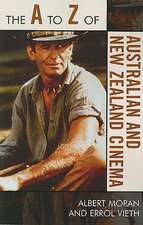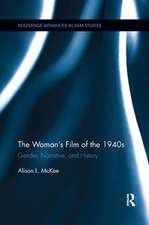Early Cinema in Russia and Its Cultural Reception
Autor Yuri Tsivian Editat de Richard Taylor Traducere de Alan Bodgeren Limba Engleză Paperback – aug 1998
Early Cinema in Russia chronicles one of the great lost periods in cinema history, that of Pre-Revolutionary Russia. In contrast to standard film histories, Yuri Tsivian focuses on reflected images: it features the historical film-goer and early writings on film as well as examining the physical elements of cinematic performance.
"Tsivian casts a probing beam of illumination into some of the most obscure areas of film history. And the terrain he lights up with his careful assembly and insightful reading of the records of early film viewing in Russia not only changes our sense of the history of this period but also . . . causes us to re-evaluate some of our most basic theoretical and historical assumptions about what a film is and how it affects its audiences."—Tom Gunning, from the Foreword
"Early Cinema in Russia . . . reveals Tsivian's strengths very well and demonstrates why he is . . . the finest film historian of his generation in the former Soviet Union."—Denise Y. Youngblood, Historical Journal of Film, Radio, and Television
"A work of fundamental importance."—Julian Graffy, Recent Studies of Russian and Soviet Cinema
"Tsivian casts a probing beam of illumination into some of the most obscure areas of film history. And the terrain he lights up with his careful assembly and insightful reading of the records of early film viewing in Russia not only changes our sense of the history of this period but also . . . causes us to re-evaluate some of our most basic theoretical and historical assumptions about what a film is and how it affects its audiences."—Tom Gunning, from the Foreword
"Early Cinema in Russia . . . reveals Tsivian's strengths very well and demonstrates why he is . . . the finest film historian of his generation in the former Soviet Union."—Denise Y. Youngblood, Historical Journal of Film, Radio, and Television
"A work of fundamental importance."—Julian Graffy, Recent Studies of Russian and Soviet Cinema
| Toate formatele și edițiile | Preț | Express |
|---|---|---|
| Paperback (2) | 320.80 lei 6-8 săpt. | |
| University of Chicago Press – aug 1998 | 320.80 lei 6-8 săpt. | |
| Taylor & Francis – 9 dec 2015 | 412.97 lei 6-8 săpt. | |
| Hardback (1) | 1005.48 lei 6-8 săpt. | |
| Taylor & Francis – 11 noi 2013 | 1005.48 lei 6-8 săpt. |
Preț: 320.80 lei
Nou
Puncte Express: 481
Preț estimativ în valută:
61.40€ • 66.72$ • 51.61£
61.40€ • 66.72$ • 51.61£
Carte tipărită la comandă
Livrare economică 21 aprilie-05 mai
Preluare comenzi: 021 569.72.76
Specificații
ISBN-13: 9780226814261
ISBN-10: 0226814262
Pagini: 296
Ilustrații: 20 halftones
Dimensiuni: 152 x 229 x 18 mm
Greutate: 0.48 kg
Ediția:1
Editura: University of Chicago Press
Colecția University of Chicago Press
ISBN-10: 0226814262
Pagini: 296
Ilustrații: 20 halftones
Dimensiuni: 152 x 229 x 18 mm
Greutate: 0.48 kg
Ediția:1
Editura: University of Chicago Press
Colecția University of Chicago Press
Cuprins
List of illustrations
General editors' preface
Acknowledgments
Abbreviations
Note on transliteration, translation and the Russian calendar
Foreword
Tom Gunning
Introduction
Part I
1. Early cinema architecture and the evolution of the social composition of cinema
2. Projection technique as a factor in aesthetic perception
3. The acoustics of cinema performance
4. The reception of interference
Part II
5. Shifting textual boundaries
6. The reception of the moving image
7. The reception of narrative categories
8. The receptions of narrative devices
Postscript
Notes
Bibliography
Index
General editors' preface
Acknowledgments
Abbreviations
Note on transliteration, translation and the Russian calendar
Foreword
Tom Gunning
Introduction
Part I
1. Early cinema architecture and the evolution of the social composition of cinema
2. Projection technique as a factor in aesthetic perception
3. The acoustics of cinema performance
4. The reception of interference
Part II
5. Shifting textual boundaries
6. The reception of the moving image
7. The reception of narrative categories
8. The receptions of narrative devices
Postscript
Notes
Bibliography
Index















